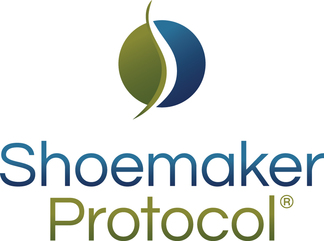Week of August 7, 2023

1/ Sluggish metabolism, weight loss with CIRS:
QUESTION: I have been diagnosed with multiple autoimmune disease. I have gained 30-40 pounds as a result of this illness. Now, following the Protocol, I am also currently following the no-amylose diet and have not seen any results in weight loss. Is there anything else I should be doing to help kickstart my metabolism?
ANSWER: Hypometabolism is well documented to be shown by GENIE. Insulin resistance will create difficulty losing weight as shown by GENIE. Leptin resistance, not shown by GENIE, but is shown by molecular hypometabolism.
Make sure you are not exposed and you have been following the Protocol, the 12-steps in sequential order, and thereby defeating molecular hypometabolism.
RESOURCE NOTE: Dr. Shoemaker’s weight loss book, Lose the Weight You Hate provides more in-depth information on the above topics.
2/ GI Issues, low amylose diet
QUESTION: Is there somewhere on the site I can find more information about whether GI issues such as bloating prior to treatment are typical for CIRS? Is there somewhere that the mechanism of low amylose diet being helpful is explained?
ANSWER: Bloating can be typical of CIRS. This GI discomfort may be due to ingestion of binders such as cholestyramine take on an empty stomach or Welchol taken with food. This bloating is not necessarily due to intensification. The mechanism of low amylose diet is summarized in the weight loss book, Lose the Weight You Hate (by Dr. Shoemaker).
3/ Diet:
QUESTION: Other than gluten free, is there a diet to follow?
ANSWER: Some patients may need to follow the low amylose diet during step 7 of the Protocol, correcting elevated MMP-9 levels. Many patients feel better if they follow a gluten free or low amylose diet to support low inflammation, yet Dr. Shoemaker is fond of saying he follows a see food diet. That is to say, if you see food, you may eat it if it doesn’t bother you, or if you have unrelated food sensitivities.
4/ MRI to diagnose CIRS?
QUESTION: I recently had an MRI as part of the evaluation of my multisystem illness. I believe that mold is responsible for my illness but my radiologist could not give me any information of benefit regarding possible fungal infection.
Fungal infection in the brain is quite rare. What we see on MRI images are areas of scarring called gliosis, found in approximately 45% of cases but only 5% of controls. There is nothing specific about these areas of gliosis that will define an inflammatory response syndrome caused by exposure to the interior environment of water-damaged buildings.
Use of NeuroQuant, however, has revolutionized the assessment of MRI imaging of the brain in that there is a distinct volumetric pattern found in mold patients not found to date in other illnesses or in controls.
More Surviving Mold Resources:
There is additional information on NeuroQuant on the www.survivingmold website with a NeuroQuant EPA presentation (in Power Point) in March of 2013 together with a discussion on NeuroQuant presented in October of 2013 as well as our peer-reviewed and published in Neurotoxicology and Teratology Paper in June 2014. Please review those two PowerPoints and make arrangements for your physician to order NeuroQuant for you.
Also available on the Surviving Mold site is a NeuroQuant Analyisis which will track mold and lyme points in your NeuroQuant report, and more. You will receive a print out report to share with your physician.
5/ QUESTION: Regarding your 2014 study (Structural brain abnormalities in patients with inflammatory illness acquired following exposure to water-damaged buildings (a volumetric MRI study using NeuroQuant), there does not appear to be a unit provided for the average volumes for the different brain regions provided in Table 2 and 3. The standard NeuroQuant results provided now (2019) are in cm. Please confirm or provide correct unit used in the tables.
ANSWER: The average volumes are shown by left hemisphere per intracerebral volume and right hemisphere by intracerebral volume.
6/ QUESTION: If a patient has a benign brain tumor, would it be worthless to get a NeuroQuant?
ANSWER: It would still be helpful as it could be a possible source of asymmetry, among other findings.